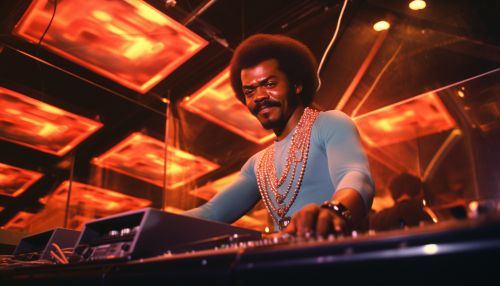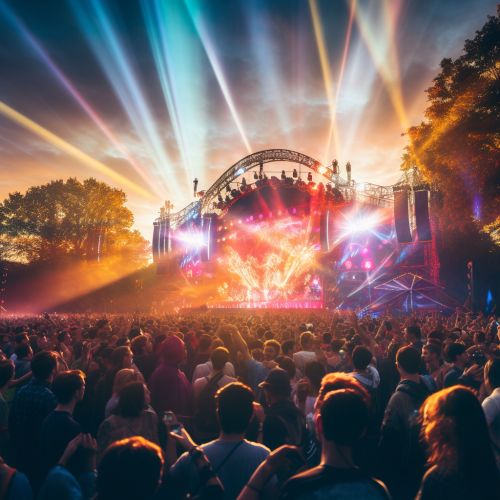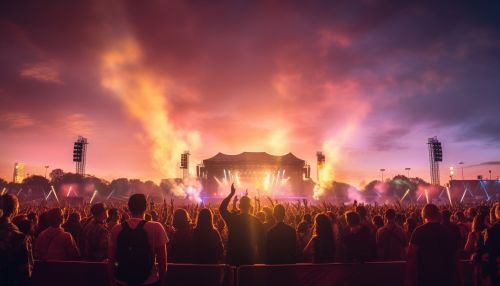Electronic Dance Music
Origins and Precursors
Electronic Dance Music (EDM) is a broad range of percussive music genres made largely for nightclubs, raves, and festivals. It is generally produced for playback by disc jockeys (DJs) who create seamless selections of tracks, called a mix, by segueing from one recording to another. EDM producers also perform their music live in a concert or festival setting in what is sometimes called a live PA.


The origins of electronic dance music are largely rooted in the development and popularity of electronic music and disco in the 1970s. Disco, an up-tempo style of dance music that originated in the African-American and Latin American communities, incorporated elements of funk, soul, pop, and salsa. The genre was further popularized by the release of "Saturday Night Fever" and the widespread adoption of disco music in nightclubs.
Evolution and Subgenres
Over time, electronic dance music has evolved and diversified, leading to the creation of numerous subgenres. These include house, techno, trance, drum and bass, dubstep, and many others. Each of these subgenres has its own unique characteristics, production techniques, and cultural influences.
House
House is a genre of electronic dance music that originated in the early 1980s in Chicago. It was initially popularized in mid-1980s discothèques catering to the African-American, Latino, and gay communities; and was later adopted by the mainstream. House is characterized by a repetitive 4/4 beat, usually produced by a drum machine, and a synthesized bassline.
Techno
Techno is a form of electronic dance music that emerged in Detroit, Michigan, in the United States during the mid-to-late 1980s. Techno is characterized by its repetitive beats, synthesized sounds, and often dark, futuristic themes and sounds.
Trance
Trance is a genre of electronic dance music that emerged from the British new-age music scene and the early 1990s German techno and hardcore scenes. Trance music is characterized by a tempo lying between 125 and 150 bpm (beats per minute), repeating melodic phrases, and a musical form that distinctly builds tension and elements throughout a track often culminating in 1 to 2 "peaks" or "drops".
Impact and Influence
Electronic dance music has had a significant impact on popular music and culture. It has influenced numerous other genres, including pop, hip hop, and R&B, and has contributed to the rise of the DJ as a creative artist in their own right. EDM has also played a major role in the global spread of club culture and has been instrumental in the growth of music festivals and other large-scale music events.


